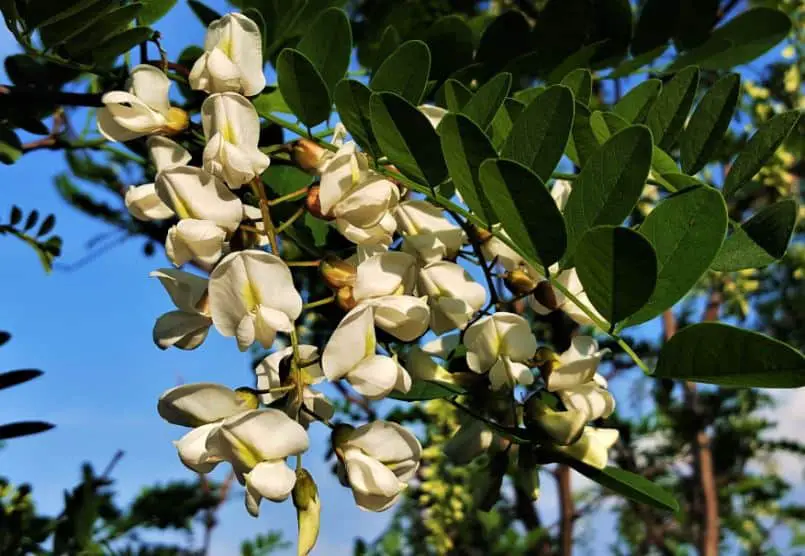What is the story of false acacia, commonly called black locust? Is it a beautiful ornamental plant or a very invasive unwanted one? The interesting reply is below.

Black Locust Tree
With black locusts, it is impossible not to fall in love (Robinia pseudoacacia). Few trees provide a more appealing contrast between the top and lower leaf surfaces or more plentiful, lovely, or fragrant blossoms. With a large trunk (up to 100 feet tall or 30.5 m) and wide limbs that stand in sharp contrast to the chains of exquisite white racemes of blooms and the fluttery, elegant leaves, it is such a lovely tree.
3- to 4-inch (7.6 to 10 cm) long brown seed pods form on the blooms. These incredibly hardy pods resemble dried, flat pea pods and may hold up to 8 seeds. These seeds survive the winter and spend many years in the seed bank thanks to their hardy, impenetrable outer shell.
Another low-maintenance tree that is incredibly simple to cultivate is the black locust. Nonetheless, the tree’s capacity to survive without human intervention has also become a drawback. It may overrun practically all other local species, driving them out of the region.
Where Is Black Locust Native?
The black locust tree is not an exotic species from another continent. Instead, it is a local species. The natural range of the black locust is in the Southern United States, stretching from Pennsylvania through Georgia and west to Appalachia. The trees are also indigenous to the slopes and forest boundaries of southern Illinois, Indiana, and Missouri.
Yet the tree has grown beyond its original region. Due to the attractiveness and toughness of its wood, it has been grown as a timber tree all along the East Coast. Moreover, it was introduced as an attractive plant and a soil stabilizer in residential areas outside its native region. Millions of these trees have since escaped cultivation, and now they may be found along highway shoulders and sprouting in thickets in places like Cape Cod.
Is Black Locust Invasive?
The flower’s fragrance attracts bees and other pollinating insects, although the flowers require pollinators to develop seeds. Are black locust trees, however, invasive? They are quite intrusive, as the U.S. East Coast has regrettably learned. Both seeds and suckers are used to reproduce these plants.
Black locust tree roots also change the soil’s chemistry by fixing nitrogen. This indicates that even decades after the black locust is eradicated, the soil may sustain a greater number of other invading species. This means that it threatens native vegetation outside of its traditional area in North America. Its shadow lessens competition from plants that need sunlight as it spreads into new regions, and dense clusters provide shaded islands with minimal ground vegetation.
In Massachusetts, where it is not native, it is now forbidden to purchase or sell black locust trees. Nevertheless, the black locust is also categorized as an invasive species in places where it is native, such as Indiana, where it has overtaken ecosystems in the prairie and savanna and was an alien species.


